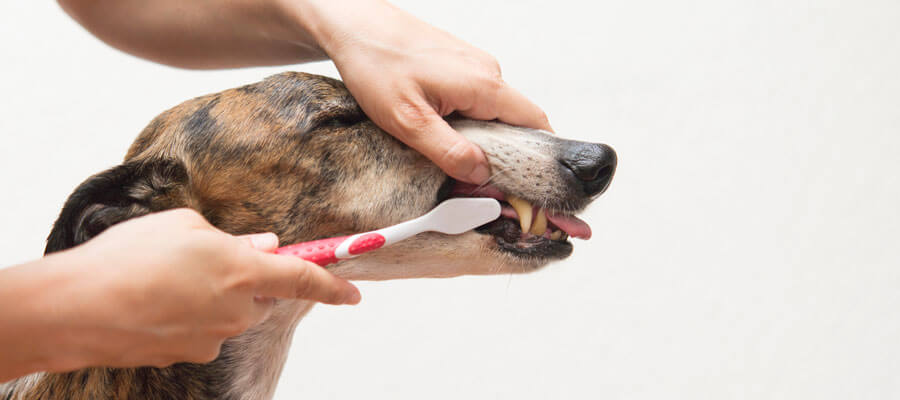February is Pet Dental Health Month, which is a big deal to everyone at Intermountain Pet Hospital. Over the years, we've heard all the reasons why people don't brush their dog's teeth. The most common is "my dog won't let me brush his teeth." Since brushing your dog's teeth is so important and shown to be 80% effective in preventing dental disease, we're going to give you three easy steps to follow to get your pup to love getting his teeth brushed.
- Number one – Brushing your dog's teeth must be a positive experience for your pup. If it's a negative experience, your dog won't let you do it, and you won't have any success. So, you have to make teeth brushing a positive experience for you and your canine.
- Number two – Brushing your dog's teeth must be habitual; you should have a routine. Something that you do the same every time, whether you do it every night or every morning, it doesn't matter, but it has to be a routine.
- Number three – Just like with us humans, brushing your dog's teeth must be daily for it to be effective—it takes 24 to 48 hours for plaque to develop into tartar. Tartar or calculus is the hard material on the tooth that can't be brushed off. Tartar and calculus have to be scaled off with a professional dental cleaning.
Dr. Bingham has several clients who brush their dog's teeth every night. Those dogs love it so much that they never let their owner go to bed without brushing their teeth. That's part of their habit, part of the routine.
Introducing Toothpaste
The first step in making brushing teeth a positive experience is using pet-specific flavored toothpaste. Poultry flavor is one of the most popular and is a great toothpaste start. To start, place a small dab of toothpaste on your finger and let your pup lick it off. Next, gently lift your pup's cheek and use your finger to rub some of the toothpaste directly onto your canine's upper outside teeth. Do this routine for about a week and remember to keep it fun and enjoyable.
Introducing the Toothbrush
You can start to introduce a toothbrush after your pup gets used to the routine with your finger and toothpaste. You're going to want to start with a toothbrush that is specifically made for dogs or a child's soft bristle toothbrush. Start by putting a dab of toothpaste on the toothbrush and letting her lick a little bit of it off. Next, lift the lip and brush the outside of these upper teeth, then the bottom of the teeth. Again, continue to the other side, making sure it's a fun experience for you and your pup.
A lot of people want to brush the inside of the teeth right away. Dogs don't like the inside of their teeth brushed. Anytime we try to brush the inside of the teeth, they usually revolt, making it a bad experience. When you start brushing your canine's teeth with a toothbrush, concentrate on brushing the outside of the upper teeth so you can make it a positive experience. The upper outside of a dog's teeth is where 90% of dental disease occurs. The inside of their teeth stays fairly clean because the tongue keeps it clean when they eat. So don't focus your energy on the inside of the teeth. After a month or so of brushing your dog's teeth with toothpaste and a toothbrush, and if they are really enjoying it, you can start to open their mouth and brush at the inside of the teeth, but initially, don't even try. You want to make it a positive experience so just stick with the outside.
That is brushing. If you have any questions or concerns about home dental care, make sure to talk to your pet's veterinarian.
